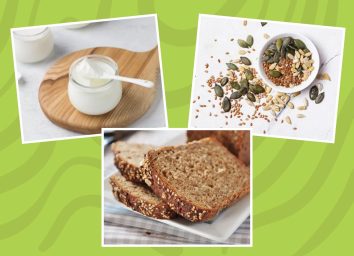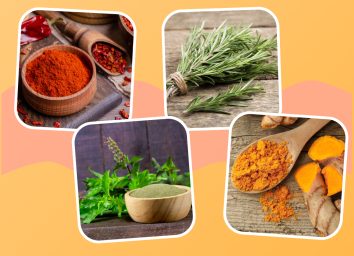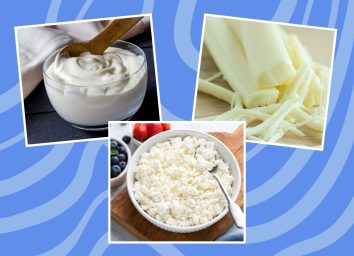Flavan-3-ols May Slash Your Heart Disease & Diabetes Risk—Here's How to Eat More of Them
Flavan-3-ols are natural plant compounds commonly found in food and drinks like apples, berries, cocoa, red wine, and tea. Although they aren't essential in your diet, research shows that they may help promote and maintain good health.
During fall 2022, the Academy of Nutrition and Dietetics (AND) released new clinical guidelines on the recommended amounts of flavan-3-ols you should include in your diet. It was the first time any recommendations were made for phytonutrients, otherwise known as natural plant compounds.
Read on to better understand why you should be including more flavan-3-ols in your diet, and learn how to incorporate more of these into your diet courtesy of one of the authors of these guidelines, Taylor Wallace, Ph.D., CFS, FACN, CEO at the Think Healthy Group, a professor in the Department of Nutrition and Food Studies at George Mason University, and editor-in-chief of the Journal of Dietary Supplements.
Why are flavan-3-ols healthy?
According to Dr. Wallace, research has shown that flavan-3-ols help prevent cardiometabolic diseases, specifically diabetes and heart disease, when you consume between 400–600 mg per day.
"This is likely due to multiple mechanisms that flavan-3-ols exert on the body—including but not limited to their strong antioxidant and anti-inflammatory activities," says Dr. Wallace.
Research shows that you can reduce cardiovascular mortality by 13%, and this value is even greater among folks over the age of 65 years.
Taking a deeper dive into the research, Dr. Wallace notes that the one thing that really stands out with flavan-3-ols is the consistency of the evidence—including clinical, observational, and laboratory studies—that has accumulated over the last two decades.
"Aside from the anthocyanins [a similar group of compounds found in berries], I can't think of any other bioactive or group of bioactives that has this immense level of evidence demonstrating their health effects," Dr. Wallace explains. "This guideline really sets precedent for how to establish recommendations for other dietary bioactives and groups of bioactives in the diet."
How to meet flavan-3-ol recommendations

You can find flavan-3-ols in a variety of common foods, including brewed green or black tea, blackberries, craisins, dark chocolate, red wine, apples, cocoa powder, blueberries, raspberries, strawberries, and grapes.
According to Wallace, brewed tea is by far the top contributor of flavan-3-ols to the diet and contributes about 95% of flavan-3-ols to the current U.S. diet.
"Data show that [green or black] tea consumers have about 20 times the intake of flavan-3-ols compared to non-consumers," says Dr. Wallace.
Green tea provides about 319 mg of flavan-3-ols and black tea provides about 277 mg flavan-3-ols. That means if you drink two or more cups of brewed tea per day, then you can easily reach the 400–600 mg per day recommendation. However, remember to be mindful of how much sugar you add to your tea, as too much can negate the benefits of the flavan-3-ols.
While beverages like tea can provide significant servings of flavan-3-ols, the other foods listed don't have quite as much. Therefore, it's tough to meet the recommendations through those foods alone. For example, one cup of blackberries provides about 64 mg of flavan-3-ols, while 5 fluid ounces of red wine provide about 17 mg.
So, what about supplements?
Should you take a flavan-3-ol supplement?
Supplements can potentially fill in the gap. However, the recommendations for flavan-3-ols put out by the Academy of Nutrition and Dietetics stresses that it should be met through food.
"High-dose supplements have an increased risk of toxicity mainly due to elevated liver enzymes and nausea or upset stomach, particularly when taken on an empty stomach," warns Dr. Wallace.
Toxic effects tend to be more pronounced with green tea supplements and many of these supplements also contain higher amounts of caffeine. Dr. Wallace mentions that
"Concentrated green tea extracts and purified catechins, including the well-known epigallocatechin gallate (EGCG), have shown more toxic effects compared to the flavan-3-ols in cocoa," says Dr. Wallace.
According to Dr. Wallace, if you choose to take green tea supplements—which is not the recommendation from the advisory panel that created these recommendations—then keep it to less than 300 mg per day.
"I take a cocoa flavan-3-ol supplement called CocoaVia because it is the only one that has been shown to have a very good safety profile and be cardioprotective in a large 20,000+ person randomized controlled trial [the COSMOS study]," says Dr. Wallace.
Additionally, Dr. Wallace advises always reading and following the dietary supplement's label instructions, as more in not always better.
The bottom line
The fact that guidelines have come out for flavan-3-ols is a HUGE deal in the nutrition world. You do want to get the 400–600 mg per day recommendation through food. However, if you do choose to take any supplements— research what you are taking and remember more isn't necessarily better.









